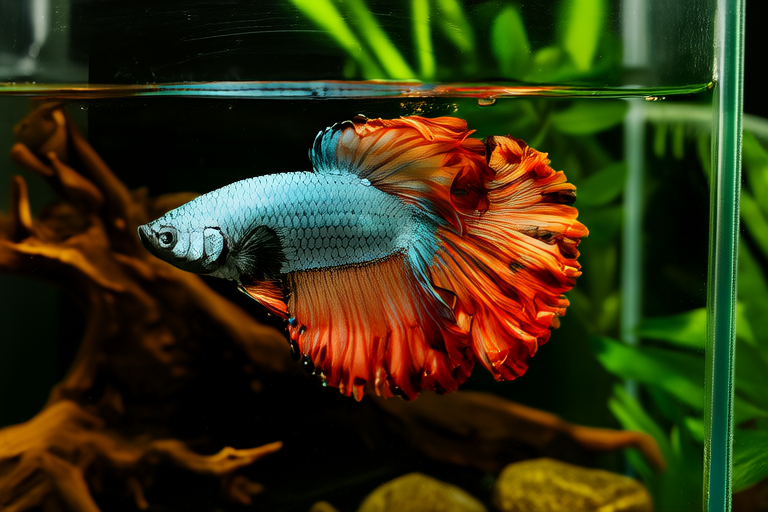Top Secrets to Keeping Your Betta Fish Happy and Healthy
Betta fish, also known as Siamese fighting fish, are among the most popular choices for aquarium enthusiasts due to their vibrant colors and flowing fins. Their unique appearance makes them a favorite for both beginners and experienced aquarists. However, these beautiful creatures have specific needs that must be met to ensure they remain happy and healthy. This guide will provide you with essential secrets to keeping your betta fish thriving.
Optimal Tank Setup
The first step towards a healthy betta is providing an appropriate living space. A minimum tank size of 2.5 gallons is recommended for a single betta, offering enough room for swimming and exploration. Ensure the tank has a secure lid to prevent escapes. Bettas prefer a decorated environment with caves, plants, and driftwood, which can stimulate natural behaviors like hiding and exploring.
Water Parameters: Temperature and pH
Maintaining the right water conditions is crucial for your betta’s health. The ideal temperature range is between 76°F and 82°F (24°C to 28°C). Use a heater to maintain this temperature consistently. The pH level should be between 6.5 and 7.5, slightly acidic to neutral. Regular testing and adjustments using pH buffers or conditioners can help keep these levels stable.
Diet Specifics
A balanced diet is key to a betta’s well-being. Offer high-quality betta pellets, supplemented with live or frozen foods such as brine shrimp, bloodworms, and daphnia. Feed your betta twice daily, giving only what it can consume within two minutes to avoid overfeeding. Overfeeding can lead to bloating and swim bladder disorders.
Tank Mates or Solitude?
Bettas are territorial and can become aggressive towards other fish, especially males. It’s best to house them alone or with non-aggressive, peaceful species that won’t outcompete them for food. Plants and decorations can serve as visual barriers, reducing stress. Alternatively, bettas can thrive alone, provided they have ample stimulation from their environment.
Regular Maintenance Routines
Perform partial water changes of about 20% weekly, removing waste and old food. Clean the filter and decorations to prevent the buildup of harmful substances. Regularly check for algae growth and remove it gently. These maintenance tasks help keep the water clean and the environment healthy.
Signs of Health and Illness
A healthy betta displays bright colors, active swimming, and good appetite. Signs of illness include lethargy, loss of color, clamped fins, or visible spots. If you notice any of these symptoms, isolate the betta in a hospital tank and consult a veterinarian specializing in aquatic animals.
Enriching Their Environment
To enhance your betta’s quality of life, incorporate various elements into its tank. Live or silk plants mimic natural habitats and offer hiding spots. Floating plants provide shade and additional oxygen. Decorative items like caves and castles encourage exploration. Ensure all decorations are safe and do not have sharp edges that could damage the betta’s delicate fins.
In conclusion, maintaining a healthy and happy betta involves understanding and meeting its unique needs. By setting up the correct tank environment, monitoring water parameters, providing a nutritious diet, choosing suitable tank mates, and regularly maintaining the tank, you can ensure your betta thrives. Enriching the tank with various decorations and plants will further contribute to its well-being, making your betta’s home a vibrant and stimulating place to live.
